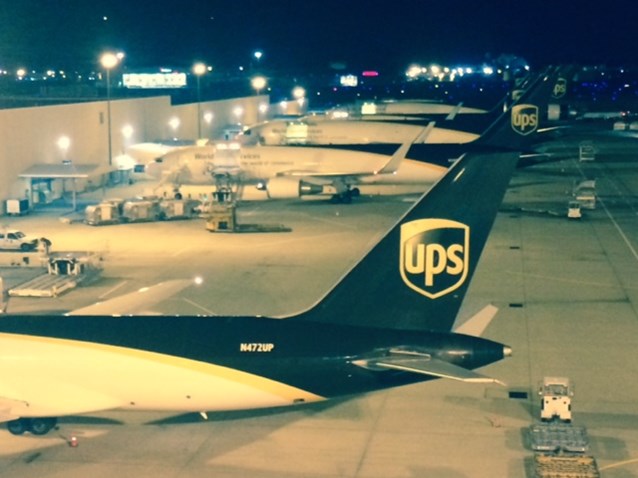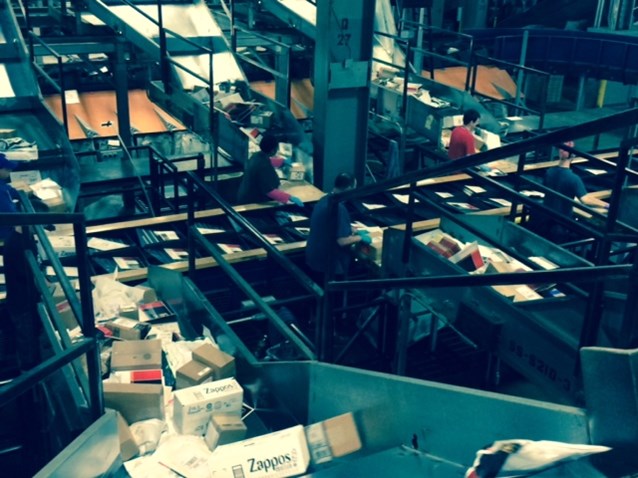UPS Worldport: A Transportation And Logistics Modern Marvel
By Ed Miseta, Chief Editor, Clinical Leader

One of the joys of working in media is the amount of travel I get to do as part of the job. While boarding planes and sitting in airports can become exhausting and tedious at times, I do get to visit some pretty amazing places that I otherwise would not have the opportunity to access. Visits to major cities like Boston, Chicago, and NYC are always enjoyable, as are visits to landmark places such as the New York Stock Exchange. Since I have been involved in the life sciences space, I have also gotten to visit some pretty memorable manufacturing facilities such as CMC Biologics, Therapure Biopharma, and Gallus Biopharmaceuticals.
Recently I had the privilege of attending a tour of the enormous UPS Worldport facility in Louisville, KY. To say this hub is incredible would be an understatement. The place is more amazing than Disney World, and should probably be considered as a contender for the eighth wonder of the modern world.
What makes the facility so amazing? Let’s consider a few numbers. The facility encompasses 5.2 million square feet of space. Most of the activity at this location takes place at night, from approximately 11:00 pm until 3:00 am. During that four hour span, up to 125 planes from across the country and around the world descend on Louisville International Airport. I was absolutely awestruck watching the string of lights in the sky, representing the planes lining up for their descent into Louisville.
Large bins from the cargo planes are unloaded, the packages and envelopes sorted and moved about the facility via four levels of automated machinery and conveyor belts, and then reloaded to be sent across the world for delivery the next morning.
 |
| A row of planes from UPS Airlines wait to be loaded/unloaded at the Worldport facility in Louisville, KY. |
Approximately 7,000 employees, some of whom are college students whose tuition tab is picked up by UPS under the Metropolitan College Program, work at that location sorting the 1.6 million envelopes and packages that will traverse the site on any given night, equating to a total of over four billion items per year. At its peak during the holiday season, it will process more than four million parcels in one day.
If you’re wondering how long it took to grow to that volume, consider this: When the hub was opened in 1982, it processed 2,000 packages that first night. Today it processes 2,000 items every 17 seconds, or 416,000 every hour. This is an enormous undertaking, to say the least, and it at times resembles highly organized chaos.
The technology behind this effort almost has to be seen to be believed. The floors in the facility are covered with rollers. This enables a cargo container that might weigh 1.5 tons to be easily moved and maneuvered by two or three individuals. When a container is brought in the packages are unloaded and placed on a conveyor. The parcels travel under a scanner that reads their barcode, and then move along approximately 155 miles of conveyor belts to the designated end point, where they are then loaded into a new container to be put back on a plane. The individuals placing the packages in those containers seem to be playing a life-size game of Tetris, moving around packages of every shape and size so as to load the bin in a way that will make the most efficient use of available space.
 |
| UPS Worldport employees work alongside miles of conveyor belts to assist 1.6 million packages per night move about the 5.2 million square-foot facility. |
For those labels that for some reason can’t be read by the scanner, a photo is taken of the label and reviewed shortly thereafter by someone via computer screen in the Telecoding Department. The zip code on the label is input, and the package is again on the move to its designated destination. The task of someone having to physically touch an item, which slows down the entire process, is minimized as much as possible. This enables the packages and envelopes to move about the facility at what I can only describe as a dizzying pace.
When a container is fully loaded it is weighed and moved alongside the plane on which it will depart the facility. Once all of the bins for that plane are weighed and ready to be loaded, a cargo plan is generated showing how the loading is to take place. This is done for two reasons: to ensure the weight on the plane is properly distributed and so the containers are loaded on the plane in the correct order, thus preventing a weight problem that could cause the plane to upend.
The Global Operations Center, located in that same facility, is staffed 24 hours a day by three shifts of workers overseeing UPS planes in service around the world 24/7. Here employees monitor the movement of those aircraft, track maintenance requirements, and closely watch the security situation in countries globally to ensure the safe and timely delivery of cargo. Five UPS employees at the center are certified meteorologists, tracking weather patterns around the world and rerouting planes during inclement conditions to minimize or avoid costly delays.
To make the visit even more enjoyable, I was able to spend some time in one of the hub’s flight simulators, a multi-million dollar piece of equipment in which UPS provides training to its 2,554 pilots (making UPS Airlines the 13th largest airline in the world). Any condition, from inclement weather to a blown engine, can be simulated in this incredibly realistic environment.
For this enjoyable and enlightening experience, I would like to thank the entire PR team from UPS, most notably David Graves, PR manager for corporate public relations; Mike Mangeot, manager of public relations for UPS Airlines; Jeff Wafford, supervisor of public relations for UPS; and Kathryn Steele, senior account executive at MSL GROUP. The hospitality they showed me and the other journalists in attendance was welcome and very much appreciated. It was an amazing tour, and one that I won’t soon forget.
